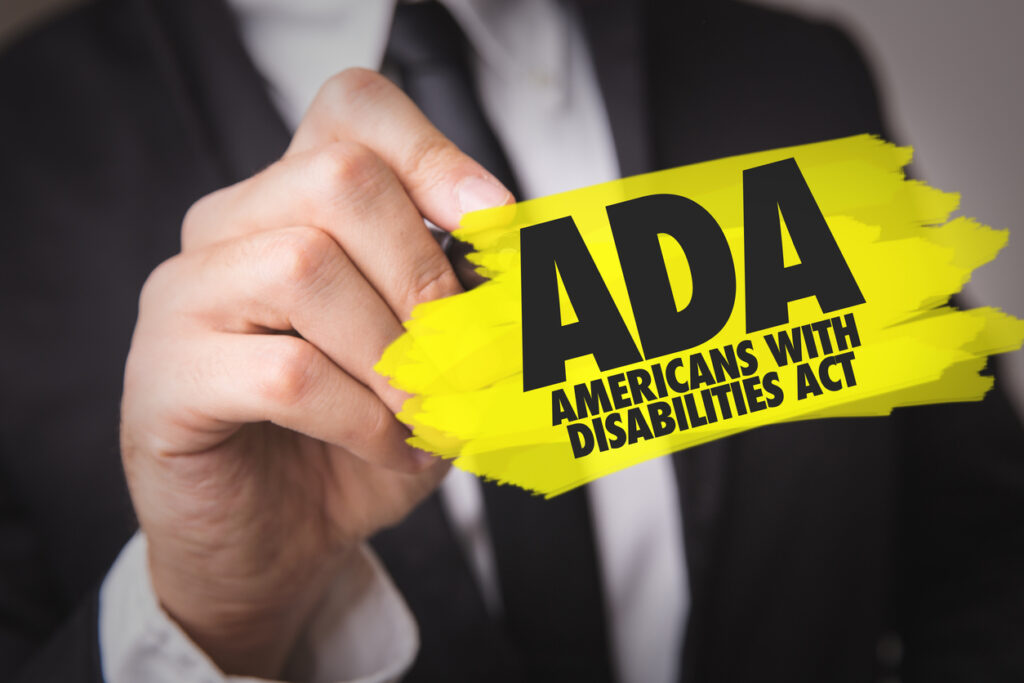Accessible websites perform better, serve more users, and show a commitment to inclusivity – which today’s customers increasingly expect. They’re also a legal necessity.
Almost all businesses and organizations that operate in the public sphere must comply with the Americans with Disabilities Act (ADA). Read on for 5 simple tips to make your website accessible to all.
Fonts
Fonts are a big part of your website’s design. They help convey your brand’s message and tone, and they can impact how well people read and understand your content. But fonts have a lot more to them than that. They also have specific traits that come into play when ADA compliance and accessibility standards are considered.
Font size, type, spacing, and color are all important factors to consider when choosing a font for your website. These features are important to ADA compliance because they ensure that your content can be perceived by people with various disabilities. This includes people with visual impairments and those with cognitive disabilities like dyslexia. It’s important to note that a person’s ability to perceive content doesn’t just include their eyes; it also includes things like color blindness and low vision.
Fortunately, many standard fonts that you can find online score high on WCAG’s color contrast ratio. These include Helvetica, Verdana, Arial, and Times New Roman. But you should always use a professional tool, such as Siteimprove’s color contrast checker, to make sure that your text has a sufficient level of contrast.
Colors
Colors are another crucial aspect of ADA compliance that can be easily overlooked. For example, if you have text on a background that is too light or too dark, it could be illegible to visitors with certain vision impairments. A simple color checker tool can help you ensure that the colors used on your website provide sufficient contrast for ADA compliance.
For instance, you should avoid putting green text on a red background. This is because people with color blindness have difficulty distinguishing between these two colors. You should also be careful about using certain patterns and hues in your website design because they can be confusing for people with color blindness or other vision impairments.
While the ADA doesn’t outline specific technical standards for websites, it does prohibit discrimination against customers with disabilities in “places of public accommodation.” This includes your website. So, if you’re not making your site accessible to people with disabilities, you could be at risk of lawsuits or losing potential customers.
Luckily, you can prevent this from happening by taking the time to make your website more ADA compliant. Keeping these tips in mind will help you create an online experience that is perceivable, operable, understandable, and robust for all of your users. And, as technology continues to evolve, it’s important that you prioritize accessibility in your digital design efforts.
Text Size
The Americans with Disabilities Act (ADA) is an important piece of legislation that ensures people with disabilities can use websites. In addition to being required by law, ADA compliance is a good business practice that increases your audience, keeps you liability-free, helps SEO efforts, and gives you great goodwill.
One of the best ways to make your website ADA compliant is by optimizing the text size. This is because the goal of ADA compliance is to create an inclusive digital space, and the way you do that is by catering to users with different visual abilities. Having large and easily resizable text is crucial to achieving this goal.
Using the right HTML tags for images is another important aspect of ADA compliance. For example, you must ensure alt tags are present for all images and describe the image’s function. You also need to be sure your forms have clear, visible instructions for each field. For example, you cannot use field names that appear in the same color as the form’s background.
Other ADA compliance rules include having captions and transcripts for all audio content, providing consistent navigation throughout the site, and having keyboard-accessible functionality. It is also a good idea to have an accessibility statement on your website that outlines your ADA compliance goals and how users can contact you with any questions.
Navigation
One of the most important parts of ADA compliance is clear and organized navigation. It helps visitors to your website understand the structure of your pages and how content is categorized. This is essential for all users, but especially important for those with disabilities. It also helps improve search engine optimization and site performance metrics like time on page.
Having your website accessible to everyone means including options for color contrast, audio playback control, and keyboard access. It’s also a good idea to include an accessibility statement on your website that outlines your accessibility goals and what you’ve done to meet them. This shows transparency and fulfills requirements under the ADA and other global accessibility guidelines such as WCAG.
There are a few misconceptions about ADA compliance when it comes to websites. For starters, the law does not only apply to new construction and renovations. Rather, any business that serves the public and has physical spaces or digital products must adhere to ADA compliance rules. This includes retail, hospitality, healthcare, finance, education, and state and local government entities. In addition, private companies with 15 or more employees are also subject to ADA compliance standards for their websites and digital products. These rules can lead to hefty fines and negative publicity for businesses that ignore them. Getting your website ADA compliant can help avoid these problems and shows a commitment to inclusivity that today’s customers increasingly expect.
Conclusion
When it comes to website design and development, Venice Web Design stands out as a leader in the industry. Our commitment to creativity, user-focused design, and cutting-edge technology ensures that each project not only meets but exceeds client expectations. With a portfolio that showcases a diverse range of successful projects, we have demonstrated our ability to cater to various industries and business needs.
What truly sets Venice Web Design apart is their dedication to collaboration and transparent communication throughout the design process, making them a trusted partner for businesses looking to enhance their online presence. Whether you’re a startup seeking to establish your brand or an established business aiming to revamp your website, choosing Venice Web Design means you’re opting for excellence, innovation, and results. For anyone in search of the best website design and development agency, the choice is clear—Venice Web Design is your go-to partner for digital success.


